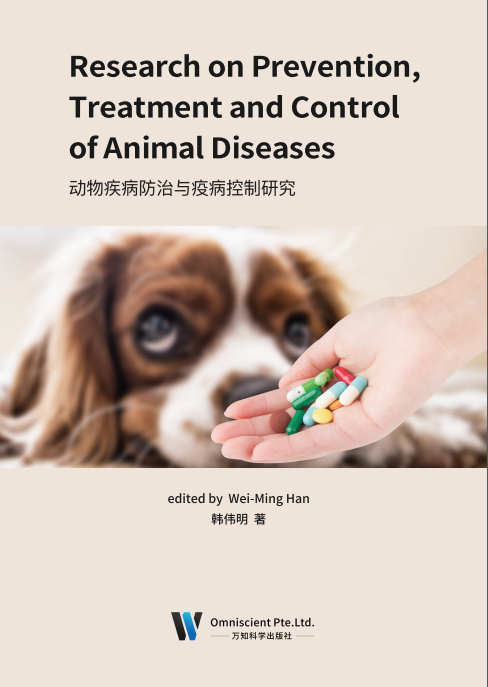
Preface
In recent years, with the rapid development of China’s animal husbandry situation, especially the emergence of small and medium-sized farms and free range farmers, the knowledge of animal disease prevention and control is very little, which leads to the occurrence of diseases in production. With the development of industrialization, intensification and industrialization of animal husbandry, due to the influence of management facilities, internal and external environment changes, diet coordination, feeding methods and other factors, as well as the continuous increase of breeding density, scientific management level can not keep up with the rapid expansion of production scale, which can lead to metabolic disorders and nutritional disorders of animals. It directly or indirectly caused serious economic losses to the development of animal husbandry, especially the mass disease has become the main factor restricting the development of large-scale farms.
There are many kinds of animal diseases in China, the pathogen is complex and the epidemic range is wide. Major animal diseases such as aftosa, porcine reproductive and respiratory syndrome, influenza in birds and other major animal diseases are still prevalent in some regions, and there are immune virus carrying and immune clinical diseases. Some nutritional and metabolic diseases, parasitic diseases, environmental diseases, cold stress and hot climate lead to slow growth of livestock and poultry, low stocking rate, serious impact on the normal development, reproduction and production capacity of animals, reduce the quantity and quality of livestock breeds and animal products, and even lead to a large number of animal deaths. The global animal epidemic situation is becoming more
and more complex, and the risk of transmission of exotic animal diseases such as bovine spongiform encephali tis and infection with African swine fever virus continues to exist. Brucellosis, rabies, hydatidosis and other zoonoses were on the rise, and even outbreaks occurred in some areas; according to reports, 75% of human infectious diseases come from animals or animal derived food. If we do not strengthen the prevention and control of animal diseases, it will seriously endanger public health and safety, and even endanger human health.
Animal disease science describes the common disease types and prevention and control methods in the production process of various animals. It is the core course of animal medicine and animal science. Through learning, students’ ability to analyze and solve problems can be cultivated independently.
前 言
近年来,随着我国畜牧业形势的快速发展,尤其是中小规模的养殖场和散养户的出现,对动物疾病防治知识了解得很少,从而导致生产中疾病屡见不鲜;而随着畜牧生产的工厂化、集约化、产业化的发展,动物因管理设施、内外环境变化、日粮的配合、饲养方法等因素的影响,加之养殖密度不断增加,科学管理水平跟不上生产规模的快速扩大,都可能导致动物机体代谢失调和营养障碍,直接或间接地给畜牧业发展造成了严重的经济损失,特别是群发性疾病已成为制约规模化养殖场发展的主要因素。
我国动物疫病种类多、病原复杂,流行范围广。口蹄疫、猪高致病性繁殖与呼吸综合征、高致病性禽流感等重大动物疫病仍在部分区域呈流行态势,存在免疫带毒和免疫临床发病现象。某些营养代谢病、寄生虫病中毒病及环境性疾病,寒冷应激,炎热气候等导致畜禽生长缓慢,出栏率低,严重影响动物正常发育、生殖和生产能力,降低畜种及畜产品数量和质量,甚至导致动物大批死亡。全球动物疫情日趋复杂,牛海绵状脑病、非洲猪瘟等外来动物疫病传人风险持续存在。布鲁菌病、狂犬病、包虫病等人畜共患病呈上升趋势,局部地区甚至出现暴发流行;据资料报道, 75%的人类传染病来源于动物或动物源性食品,如不加强动物疫病的防治,将会严重危害公共卫生安全,甚至危及人类的健康。
动物疾病学详细阑述了各种动物生产过程中常见的疾病种类以及防控方法,是动物医学专业、动物科学专业的核心课程,通过学习可以培养学生独立分析问题和解决问题的能力。

Wei-Ming Han, male, the Han nationality, bachelor’s degree, born in Yuanping City, Shanxi Province in March 1964. He graduated from Shanxi Agricultural University majoring in veterinary medicine in July 1987. He has been engaged in animal husbandry and veterinary research for a long time. He has won the first prize of Shanxi Province rural technology contract award and the first prize of national agriculture, animal husbandry and fishery harvest award; participated in the preparation of six animal husbandry and veterinary lecture materials; and published more than 10 papers and papers in academic journals.
韩伟明,男,汉族, 1964 年 3 月生,山西原平人。 1987 年 7 月毕业于山西农业大学兽医专业,本科学历。长期从事畜牧兽医的工作与研究。曾获得山西省农村技术承包奖一等奖一项,全国农牧渔业丰收奖一等奖;参与编写畜牧兽医讲义六部;累计在学术杂志上发表论文论著十余篇。